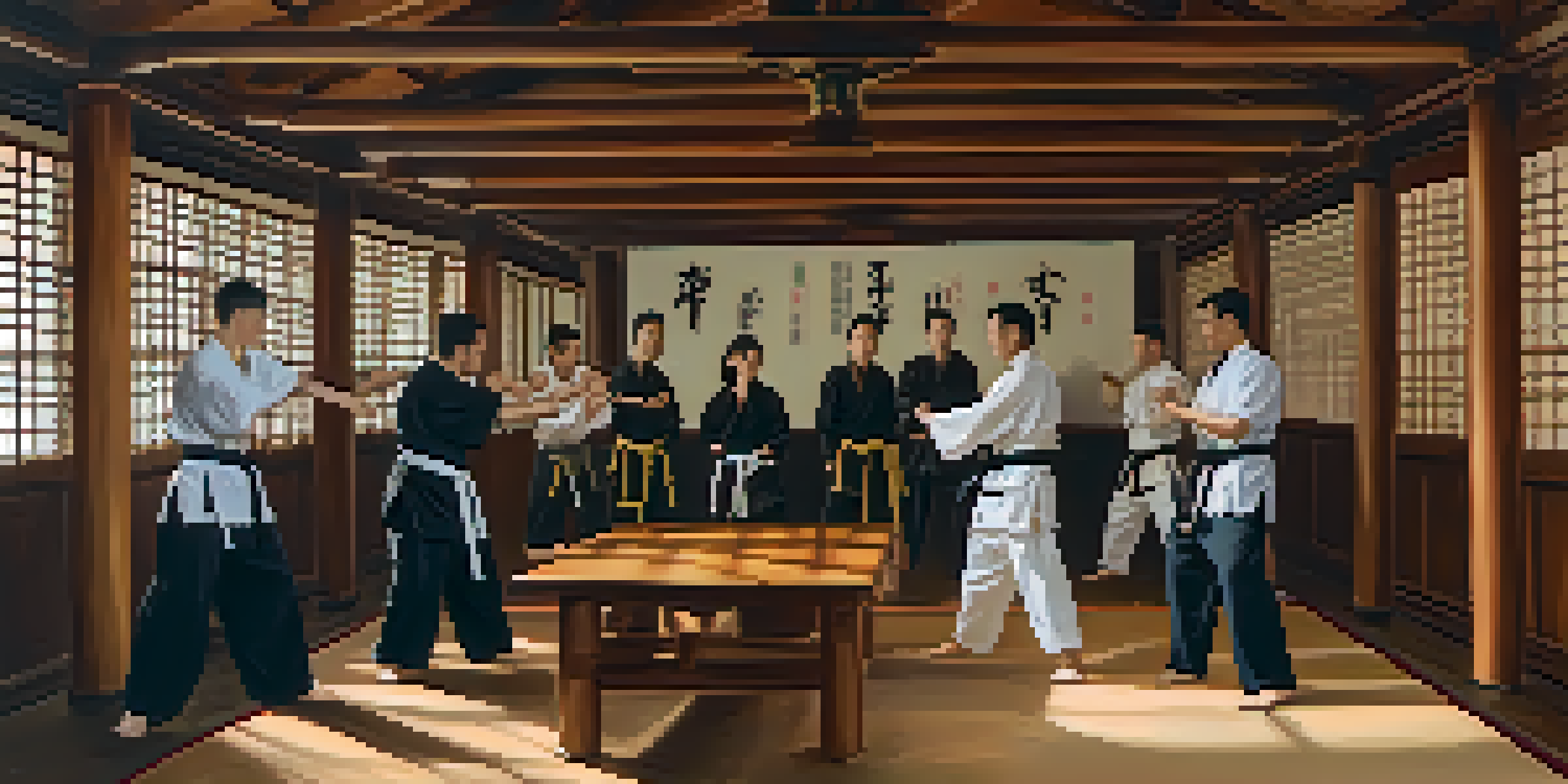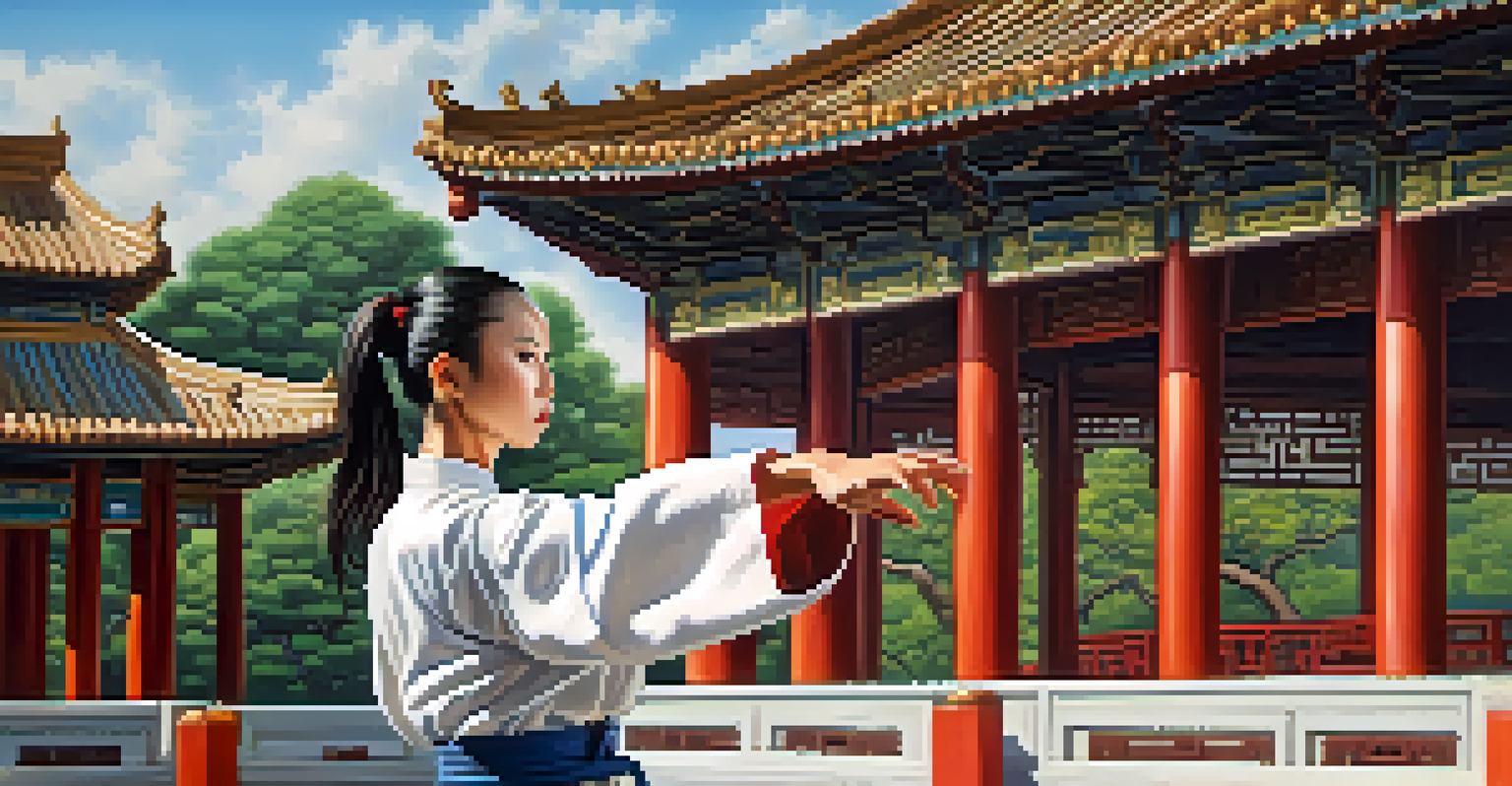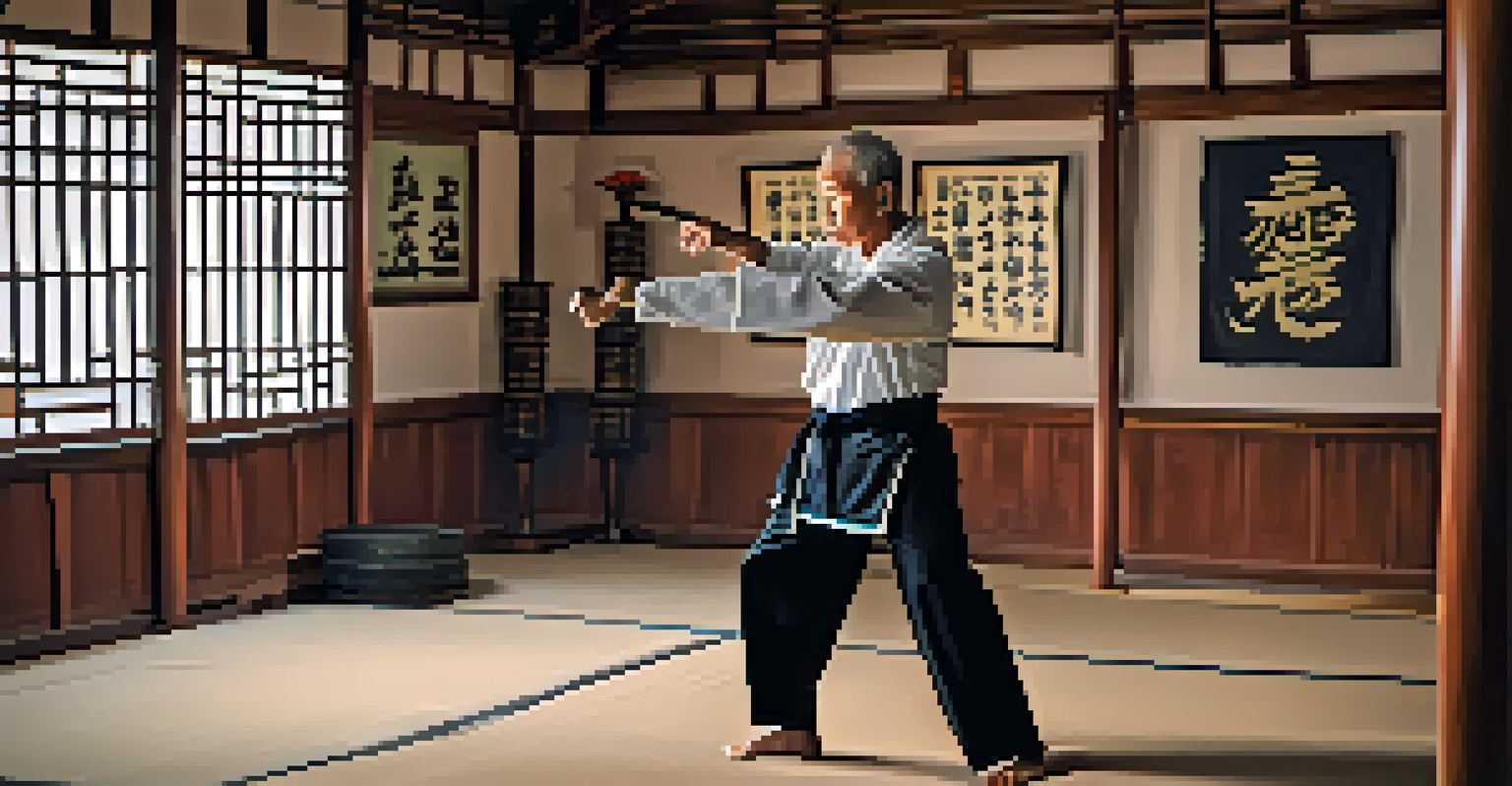The Role of Yip Man in Popularizing Wing Chun Kung Fu

The Historical Context of Wing Chun Kung Fu
Wing Chun Kung Fu, a martial art with roots in Southern China, emerged during a period of social upheaval. It was designed as a practical self-defense system, focusing on efficiency and directness rather than flashy techniques. This simplicity made it accessible to a wide range of practitioners, especially women, who were often overlooked in traditional martial arts.
The ultimate aim of martial arts is not having to use them.
The art's development is attributed to legendary figures like Ng Mui, a Shaolin monk, who crafted its principles. However, it wasn't until the 20th century that Wing Chun gained significant recognition, largely due to Yip Man's influence. His teachings transformed it from a regional practice to a globally recognized martial art.
By the time Yip Man began teaching, Wing Chun had established a dedicated following, but it was still relatively obscure outside of China. Yip Man's efforts to promote it would soon change that, as he sought to share its effectiveness with a broader audience.
Yip Man's Early Life and Training
Yip Man was born in 1893 in Foshan, Guangdong Province, into a wealthy family. From a young age, he showed a keen interest in martial arts and began training in Wing Chun under Chan Wah-shun. His dedication was evident, and he quickly mastered the art, eventually becoming Chan's top student.

After his teacher's passing, Yip Man faced challenges in continuing his training due to the political climate in China. However, he remained committed to Wing Chun, honing his skills and understanding of the art. This period of self-discipline and perseverance laid the foundation for his future as a master instructor.
Yip Man's Influence on Wing Chun
Yip Man played a crucial role in transforming Wing Chun from a regional practice into a globally recognized martial art.
Yip Man's early experiences shaped his teaching philosophy, emphasizing practicality and adaptability in combat. These principles would later become crucial in his approach to instructing students, setting the stage for his significant role in popularizing Wing Chun.
Yip Man's Move to Hong Kong and Teaching Career
In 1949, Yip Man relocated to Hong Kong, a pivotal moment that would change the course of Wing Chun's history. Arriving with little money and no established reputation, he began teaching in a small, cramped apartment. However, his unique approach quickly attracted students, including those from diverse backgrounds.
Martial arts is not about fighting; it's about building character.
Yip Man's teaching style was approachable, focusing on the practical applications of Wing Chun techniques. He emphasized the importance of understanding one's body mechanics and the principles of balance and leverage. This made Wing Chun not only effective but also appealing to beginners who were seeking a martial art they could relate to.
As word of Yip Man's expertise spread, his student base grew, leading him to establish a formal school. This marked the beginning of a movement that would see Wing Chun become a household name, largely thanks to the dedication and charisma of its new champion.
Influential Students and Their Impact
Yip Man's most famous student is undoubtedly Bruce Lee, who would go on to revolutionize martial arts in the West. Lee's passion for Wing Chun and his innovative spirit helped introduce the art to a new audience, showcasing its effectiveness in films and popular culture. This collaboration not only highlighted Yip Man's teachings but also solidified his legacy.
Beyond Bruce Lee, Yip Man trained many other students who became prominent martial artists in their own right. Figures like Wong Shun Leung and Leung Ting carried on his teachings and expanded the reach of Wing Chun globally. Their successes in competitions and demonstrations further validated Yip Man's methods.
Legacy Through Influential Students
Prominent students like Bruce Lee and Wong Shun Leung helped popularize Wing Chun worldwide, ensuring its teachings continued to thrive.
These students created a network of Wing Chun practitioners who would spread the art worldwide. Their achievements not only honored Yip Man's legacy but also ensured that Wing Chun would thrive long after his passing, establishing a community that continues to grow today.
The Role of Media in Popularizing Wing Chun
The rise of cinema in the late 20th century played a crucial role in popularizing Wing Chun. Bruce Lee's films, such as 'Enter the Dragon,' showcased his martial arts prowess and introduced audiences to the effectiveness of Wing Chun techniques. This not only captivated viewers but also sparked interest in learning the art.
Television shows and documentaries about martial arts further contributed to Wing Chun's visibility. Yip Man's story and teachings became subjects of films, helping to romanticize and mythologize his legacy. As a result, more people were drawn to pursue Wing Chun, eager to learn from the master who inspired an icon.
Media representation transformed Wing Chun from a niche practice into a mainstream phenomenon. As it gained traction in the West, martial arts schools began incorporating Wing Chun into their curricula, affirming Yip Man's impact on martial arts culture globally.
Yip Man's Philosophy and Teaching Methods
Yip Man's philosophy revolved around the idea that martial arts should be practical and applicable in real-life situations. He believed in teaching students to think critically about their movements, encouraging them to adapt techniques to their unique body types and fighting styles. This personalized approach made Wing Chun accessible to many, regardless of age or physical ability.
His emphasis on principles over memorization distinguished his teaching methods. Yip Man often focused on concepts like 'centerline theory' and 'economy of motion,' which helped students understand the underlying mechanics of Wing Chun. This approach fostered a deeper appreciation of the art, encouraging practitioners to experiment and develop their skills.
Media's Role in Wing Chun's Fame
Films and documentaries featuring Yip Man and Bruce Lee significantly increased Wing Chun's visibility and popularity in the West.
Yip Man's teachings extended beyond physical techniques; he instilled values of respect, humility, and perseverance in his students. These principles have become integral to Wing Chun's identity, reflecting Yip Man's belief that martial arts should cultivate not only the body but also the mind and spirit.
The Lasting Legacy of Yip Man and Wing Chun
Yip Man passed away in 1972, but his influence on martial arts continues to resonate today. His role in popularizing Wing Chun has led to a worldwide community of practitioners who honor his teachings. Schools dedicated to Wing Chun have sprung up across the globe, ensuring that his legacy endures.
The art's growth can be attributed not only to Yip Man's teachings but also to the dedication of his students and their students. This lineage has created a rich tapestry of styles and interpretations, reflecting the versatility of Wing Chun. Each practitioner carries a piece of Yip Man's spirit, contributing to the art's evolution.

As Wing Chun continues to gain popularity, the impact of Yip Man remains undeniable. His vision of a practical, accessible martial art has inspired countless individuals, making Wing Chun a testament to his life’s work and dedication to the martial arts community.